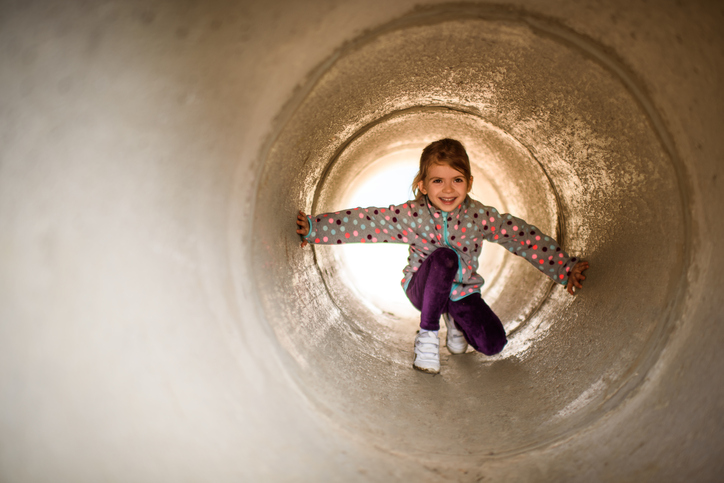By Barbara Butler
Play is the universal language of childhood and every kid is drawn to it, regardless of ability. For children who have mobility challenges, finding a welcoming space to enjoy play is not always as easy as we'd like. One solution is to create a playful, accessible oasis in your own backyard.
Through my involvement with the Magical Bridge Foundation, I've immersed myself in the world of truly accessible playgrounds as I designed and built the two-story playhouse, stage and treehouse that sits at the center of the Magical Bridge Playground. You can bring the magic into your own home with these tried-and-true strategies:
Eliminate Barriers
- Think about access to the play area. Make sure there are no steps or curbs that must be stepped over—try to create an entrance that someone in a wheelchair or walker can navigate easily.
- Create a smooth accessible path that loops throughout the yard.
Add Easy-to-Reach Play Activities
- Line the path with a variety of ground-level activities.
- Position a single-story playhouse at the edge of the path for hours of imaginative play. In the eyes of a child, a playhouse can become a pirate ship, a castle, a bakery or a spy base, depending on the day! Ensure the doorway is 32-inches minimum width so a child in a wheelchair can go through it.
- Modify an existing sand or water table by creating space for a wheelchair to pull right beside it.
- Create activity panels within arm's reach by adding various accessories to a plywood base. Some favorites are tic-tac-toe, steering wheels and storefront panels.
- Install a chalkboard on the side of the path with a selection of colored chalk and erasers.
- Set up a low bubbles station with various wands that can create different sized bubbles.
Customize Standard Playground Equipment
- Think outside the bucket swing—there are many alternative swing designs you can buy to fit a wide variety of needs, from swings with seat belts to reclining swings.
- Explore crawl tubes. Some kids in wheelchairs can transfer to ground-level tunnels for a new sensory experience.
- Make a clatter bridge over a dry creek. First, dig away the ground below the bridge span and add rocks as if it was a stream. Next, make a bridge out of gapped two-by-four-inch wooden beams so that the wheels clatter while rolling across it.
- Make slides accessible, if you have the room. For a bigger yard, build ramps that rise no more than 12 inches in height over a 12-foot run, followed by a level flat, five-foot wide "turnaround space" before the next ramp starts up. Be sure to add bumper stops or railings along the edges of the ramp to prevent accidents. This will take up a lot of space but if you have it, it's a ton of fun for kids of all abilities to go up and down. For ramps that lead to a platform with a slide, add a transfer seat right next to the slide entrance so that the child can transfer out of their wheelchair and onto the slide bed for a thrilling ride down.
- Create your own version of our Hideaway Huts, which will be included in all future Magical Bridges. These cozy wooden structures invite kids to take a break when they feel overstimulated, while still allowing them to keep an eye on nearby play though the gaps in the boards. You can also make a seasonal hut by growing snap peas or other vines around a string tipi structure.
Set Up a Stage
- Lastly, my favorite: Create a theater by adding a platform next to the pathway. Keep the platform level to the ground for more accessibility, add an archway and curtains, and you'll be ready for showtime. Whether acting out their favorite movie scene, doing improv or putting on a musical act, if you give kids a stage, they will shine!
Most importantly, get out there and have fun with your kids! Children are endlessly creative, and you may be inspired to add new elements to your backyard based on your little one's interests.
 Barbara Butler, the founder and CEO of Barbara Butler Artist-Builder Inc (415-864-6840), has been designing and building extraordinary custom treehouses and play structures for children for over 20 years, both residential and commercial, within the U.S. and internationally. Please visit her site or email information@barbarabutler.com for additional info.
Barbara Butler, the founder and CEO of Barbara Butler Artist-Builder Inc (415-864-6840), has been designing and building extraordinary custom treehouses and play structures for children for over 20 years, both residential and commercial, within the U.S. and internationally. Please visit her site or email information@barbarabutler.com for additional info.








